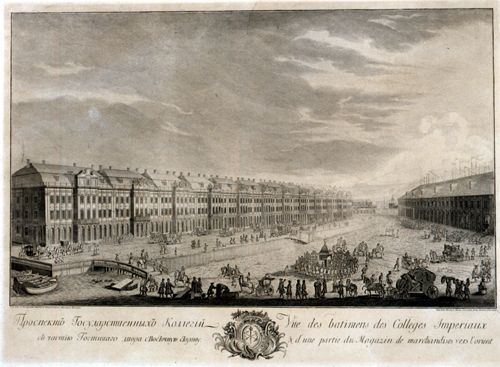Construction started 1722 | Opened 1744 | |
 | ||
Address University Embankment, 7, Sankt-Peterburg, Russia, 199034 Similar Vasilyevsky Island, Menshikov Palace, Antipievskaya church, Nativity of St John the Baptist, Lazarus church | ||
The Twelve Collegia, or Twelve Colleges (Russian: Двeнaдцaть Коллегий) is the largest edifice from the Petrine era remaining in Saint Petersburg. It was designed by Domenico Trezzini and Theodor Schwertfeger and built from 1722 to 1744.
Contents
Description
The three-storey, red-brick complex of 12 buildings is 400–440 meters long, giving an illusion of one enormous edifice. The result is an "austerely structured" complex with a "rustic style". The original design separated the 12 individual buildings. In subsequent restructuring, they would be connected to form the modern complex.
History
The Twelve Collegia was commissioned by Peter the Great, who wanted a place for the Russian government, at the time divided into 12 branches:
Modern use
Twelve Collegia presently serves as one of three Petrine Baroque structures for Saint Petersburg State University. The Twelve Collegia are the headquarters of the university, which was founded in 1819 (it claims be the successor of the Academy of St. Petersburg, and dates its foundation to 1724), stands along Mendeleevskaya Line on Vasilievsky Island.
